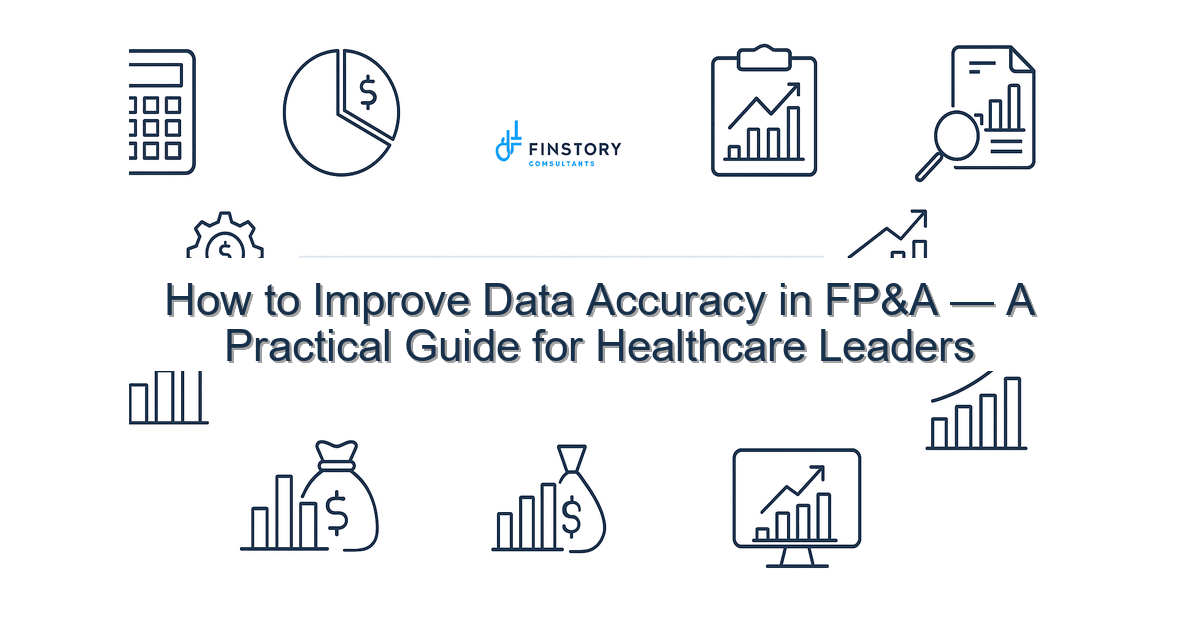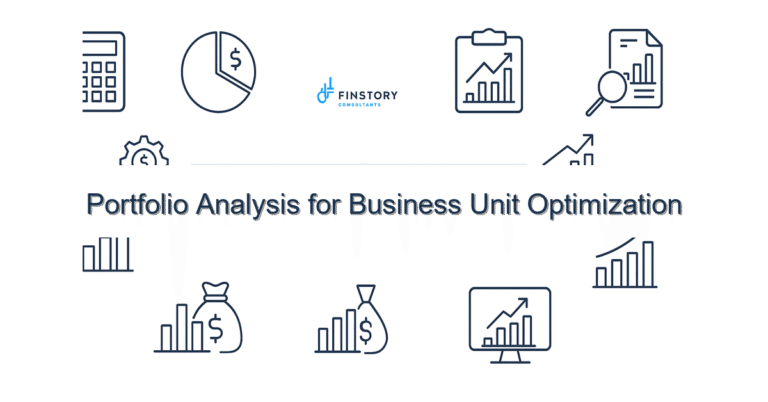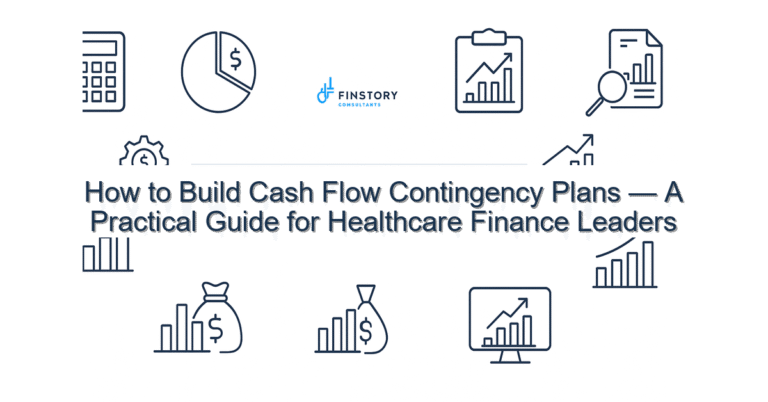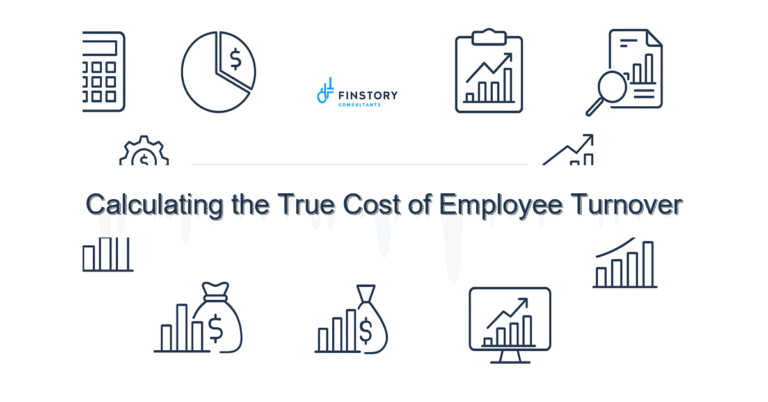How to Improve Data Accuracy in FP&A — A Practical Guide for Healthcare Leaders
You’re responsible for decisions that affect patient care and the hospital’s financial future. When numbers wobble, sleepless nights follow—board questions, staffing headaches, and delayed investments. You need reliable data, fast.
Summary: Improve data accuracy in FP&A by fixing source issues, automating routine flows, defining clear ownership, and applying tight validation. Do that and you’ll shorten close cycles, cut rework, and give operations leaders the numbers they can trust.
What’s the real problem? (data accuracy in FP&A)
At its core, the problem isn’t spreadsheets or BI tools; it’s trust. FP&A teams in healthcare are buried in disconnected systems—EHRs, payroll, supply chain, and billing—each with its own view of the truth. When FP&A assembles numbers, discrepancies emerge and leaders hesitate to act.
- Symptom: Forecasts change daily because inputs arrive late or are corrected manually.
- Symptom: You get different answers from finance and operations about bed utilization, revenue per case, or labor costs.
- Symptom: Reconciliation dominates meetings—teams spend hours justifying numbers instead of planning.
- Symptom: The close and forecast cycles stretch too long, blocking timely decisions.
What leaders get wrong
Leaders often assume accuracy will emerge from working harder—more reconciliation, more reconciliations meetings, or longer review cycles. That’s tactical, not strategic. Other common pitfalls:
- Relying on ‘hero’ staff who manually fix errors instead of fixing the underlying process.
- Ignoring source-system quality because reporting tools can “clean” the data later.
- Treating governance as bureaucracy rather than a trust-building practice.
- Investing in flashy dashboards without standardizing definitions first.
A better approach
Improve data accuracy in FP&A by treating it as an operational capability, not a reporting problem. Here’s a simple, pragmatic 4-step framework you can start with this month.
- Map sources and owners. Inventory the systems and hands that touch key metrics (revenue, labor, case mix). Assign a single owner for each source field.
- Standardize definitions. Agree on one definition for every KPI. For example, define “adjusted patient days” once and use it everywhere—finance, nursing, and operations.
- Automate ingestion and validation. Replace manual copy-paste with scheduled feeds. Build validation rules that flag outliers before they enter models.
- Close the feedback loop. When a data correction happens, trace it back to the source owner and fix the process so the same error doesn’t return.
Real-world proof: one regional health system reduced forecast variance by 40% within six months after centralizing ownership and adding automated validation rules to their revenue feeds.
Quick implementation checklist
- Create a one-page source map for your top 10 KPIs this week.
- Pick the single owner for revenue driver fields (e.g., charges, adjustments).
- Hold a 60-minute alignment meeting with ops and clinical leads to agree on definitions.
- Replace one manual import with an automated file transfer or API feed.
- Implement three validation rules: totals must match, month-over-month change limits, and null checks.
- Build a simple “data issue” ticket template and require it for every correction.
- Run a reconciliation report that shows variance drivers and share it weekly.
- Archive and version your calculation logic (no more undocumented formulas in spreadsheets).
- Train two backups for each critical FP&A task to avoid single points of failure.
- Schedule a 30-day review to measure progress and tweak rules.
What success looks like
Success is measurable and operational, not just prettier slides:
- Forecast accuracy improves (e.g., variance to plan reduced by 30–50%).
- Close and forecast cycle time shortened (from 10 days to 5 days, for example).
- Less time spent on reconciliations (FP&A headcount diverts 20–40% of time to analysis instead of fixes).
- Fewer post-close adjustments and correction tickets month-over-month.
- Higher stakeholder confidence—leadership acts faster on strategic decisions.
- Quantifiable ROI: reduced agency or overtime spend because labor forecasts matched actual need.
Risks & how to manage them
Top risks come from change resistance, technical debt, and over-automation. Mitigate them as follows:
- Risk: Resistance from clinical/ops teams. Mitigation: Start small—pilot one metric. Show how accuracy reduces rework for their teams.
- Risk: Legacy systems block automation. Mitigation: Use an incremental integration approach—file exports, RPA, then APIs—so you get wins while planning for bigger changes.
- Risk: Validation rules create false positives. Mitigation: Tune rules with a threshold buffer and include an exception process owned by source owners.
Tools & data
Improve data accuracy in FP&A using a combination of finance automation, BI, and disciplined reporting. Tools that help:
- Finance automation platforms to orchestrate feeds and reduce manual imports—see our financial automation offerings.
- Power BI or similar for centralized dashboards—but only after definitions are standardized.
- Version-controlled models and a change log for all calculations to avoid “who changed the formula” problems.
- Leadership reporting packs that separate narrative from numbers, so the board sees validated KPIs with clear assumptions—read more in our dashboard design and FP&A forecasting posts.
FAQs
Q: How long does it take to see improvement in FP&A data accuracy?
A: You can see meaningful reduction in errors within 4–8 weeks for scoped metrics (like labor or revenue feeds). Full institutional change takes 6–12 months.
Q: Should we buy a new tool or fix processes first?
A: Fix the process first. Tools accelerate good processes but won’t fix inconsistent definitions or ownership gaps.
Q: What KPIs are best to start with?
A: Start with high-impact, high-frequency KPIs: total patient revenue, labor FTEs by department, and cash collections. They affect both operations and the bottom line.
Q: How do we keep stakeholders engaged?
A: Show quick wins, publish a short “data health” scorecard, and keep the focus on how better accuracy reduces friction for their teams.
Next steps
If you want to improve data accuracy in FP&A—especially in complex healthcare operations—start with a short diagnostic: a two-week source map, three-rule validation pilot, and a stakeholder alignment workshop. Those three activities expose the biggest leak points and create momentum.
Contact Finstory to run a tailored diagnostic and build the roadmap. We combine finance automation, practical governance, and leadership reporting so you get faster, more trusted numbers.
Work with Finstory. If you want this done right—tailored to your operations—we’ll map the process, stand up the dashboards, and train your team. Let’s talk about your goals.
📞 Ready to take the next step?
Book a 20-min call with our experts and see how we can help your team move faster.
Prefer email or phone? Write to info@finstory.net
or call +91 44-45811170.






